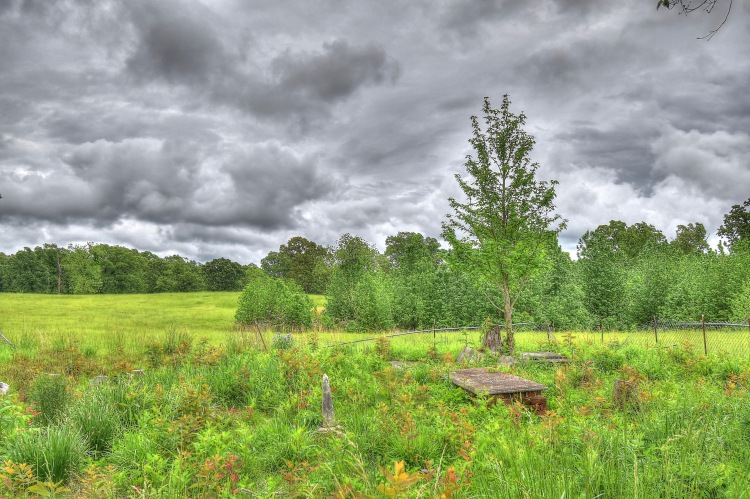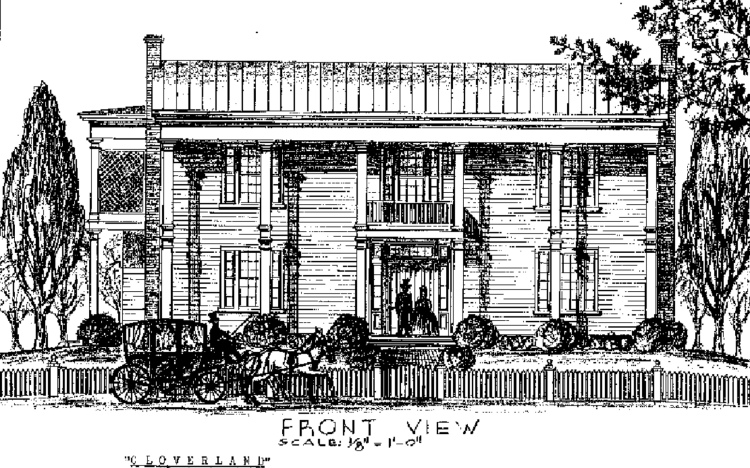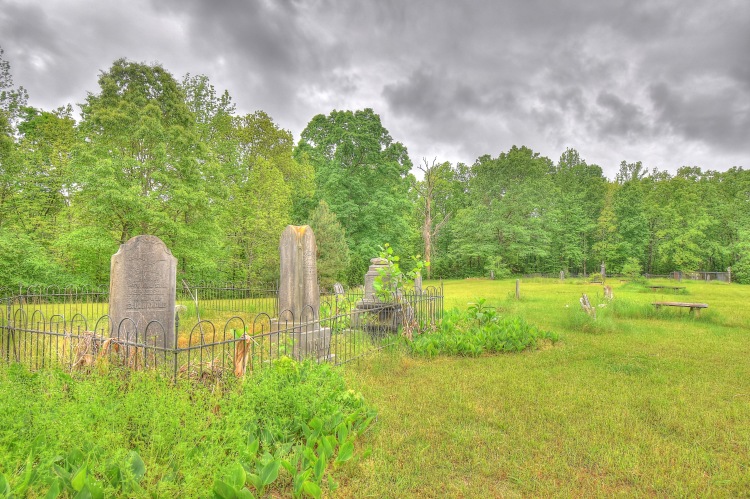Sylvestria, which means “Church in the Woods”, is neither a house nor a town, but a community that was once located northeast of Holly Springs. Sylvestria was once a vibrant community during the 1840s and 1850s, and was home to several large plantations, a church and two academies. Sylvestria has its beginnings in 1836, when Benjamin Cottrell (1800-1872), a wealthy planter from North Carolina, purchased land northeast of Holly Springs and built his first home, a log cabin, which later came to be called “Sylvestria”. The first house was destroyed in a fire, and the second house was built in 1844. According to a contemporary description of this second house, it was a two-story frame house with a front porch, wide back porch, and square columns.

Shortly after Cottrell’s arrival in the area, Malcolm McPherson and his wife Mary Wall McPherson also came to the region. After Malcolm’s death, his wife Mary, along with her brother William Wall, built the plantation known as “Sunnyside” in 1846, which was a more modest one-story Greek Revival house. Mary and William’s brother, Robert Wall (1802-1859) and his wife Martha Pegues Wall (1810-1885) built the last of the Sylvestria plantation homes, Cloverland, in 1848. Cloverland was also a two-story frame house, with square columns.

Connecting all of these plantations and families together was the Sylvestria Methodist Church, built as a log structure by Benjamin Cottrell in 1837, and the structure that gave the community its name. Many of the local families worshiped in this church, and most are buried in this cemetery that was located next to the church. Benjamin Cottrell also helped provide an education to local children by opening the Sylvestria Female Academy in his home beginning in 1836. The Female Academy lasted, in one form or another, for nearly twenty years, and many of the most prominent families in Marshall County during the 1840s and 1850s sent their female children to study at the Academy. By 1840, Cottrell’s brother Z. D. Cottrell established the Sylvestria Male Academy that operated at the same time as the Female Academy.

The community’s prosperity increased during the 1850s when the Mississippi Central Railroad come through the area. Unlike other communities nearby, such as Hudsonville and Lamar, Sylvestria didn’t have to move their town to take advantage of the new railroad. In fact, the Mississippi Central went directly behind William Wall’s Sunnyside plantation, and a spur line was created that allowed the plantation to receive a s deliver cotton and other goods. In addition, the stop also became a “flag stop” on the Mississippi Central, allowing local Sylvestria residents to quickly jump on and off the railroad. Also during the 1850s, the original log Methodist Church was replaced with a more substantial frame church.

One of the most famous sons of Sylvestria was Elias Cottrell, who was born into slavery in 1853 on the Sylvestria plantation. Cottrell, who was self-educated, would eventually rise in the ranks of the Colored Methodist Episcopal Church and become the church’s bishop. Bishop Cottrell, who became one of the most respected citizens of Marshall County, would go on to found the Mississippi Industrial College in 1905. Another important local figure who had his beginnings at Sylvestria was Edward Hull “Boss” Crump Jr., who was born on his father’s farm here in 1874. Crump spent his early boyhood on the farm before moving to Holly Springs, and would later move to Memphis and eventually become Mayor of Memphis and one of the most influential figures of the 20th century.

The plantations of Sylvestria were spared destruction during the Civil War, though the Union Army established a camp nearby for most of the War. The area began a slow decline after the Civil War and into the 20th century. In 1925, Benjamin Cottrell’s plantation was destroyed in a fire. Shortly afterwards, “Cloverland” was also destroyed, though the square columns from the house were preserved and in the 1930s were installed onto the house now known as Greenwood in Holly Springs. “Sunnyside” began a slow decline during this period until it was finally destroyed in 1970. The most devastating loss for the community was on January 30, 1931, when the Sylvestria Methodist Church was destroyed in a fire. Today, the only trace of old Sylvestria are the tombstones of the Cottrell, Wall, and other families and the snaking pathway of the old Mississippi Central railroad.









A wonderful article. I live in Holly Springs but didn’t grow up here or even in the South, so I love learning about the history of the area.
LikeLike
I live in Ashland Ms, but I am from Memphis. Love reading the history of our area
LikeLike
This was very interesting article about Sylvestria. My 2nd great-grandfather was Jeremiah “Jerry” Boone. He is buried along with his wife and one of his daughters in the Sylvestria Cemetery. I was lucky enough to visit their graves last year and clean things up a bit. Jerry lived right across the road on a plantation. While I was in town, I went to the deeds office and found where Grantor M.S. Roberts sold 167 1/2 ac to Grantee Jerry Boone on 8/13/1883. On that very same day Jerry gave 1/8 ac of that land to the Sylvester Church. I wish there was old pictures of the church. I walked the property where the Boone plantation was located. I truly enjoyed every minute of my visit and I will be back next year. Sue Irish
LikeLike
There needs to be an historical marker for the town and maybe start a Friend’s of Sylvestria Cemetery who come out a couple of times a year to keep up the cemetery and maybe restore some of the stones. There are probably several stones that are fallen and covered with dirt and grass.
LikeLike